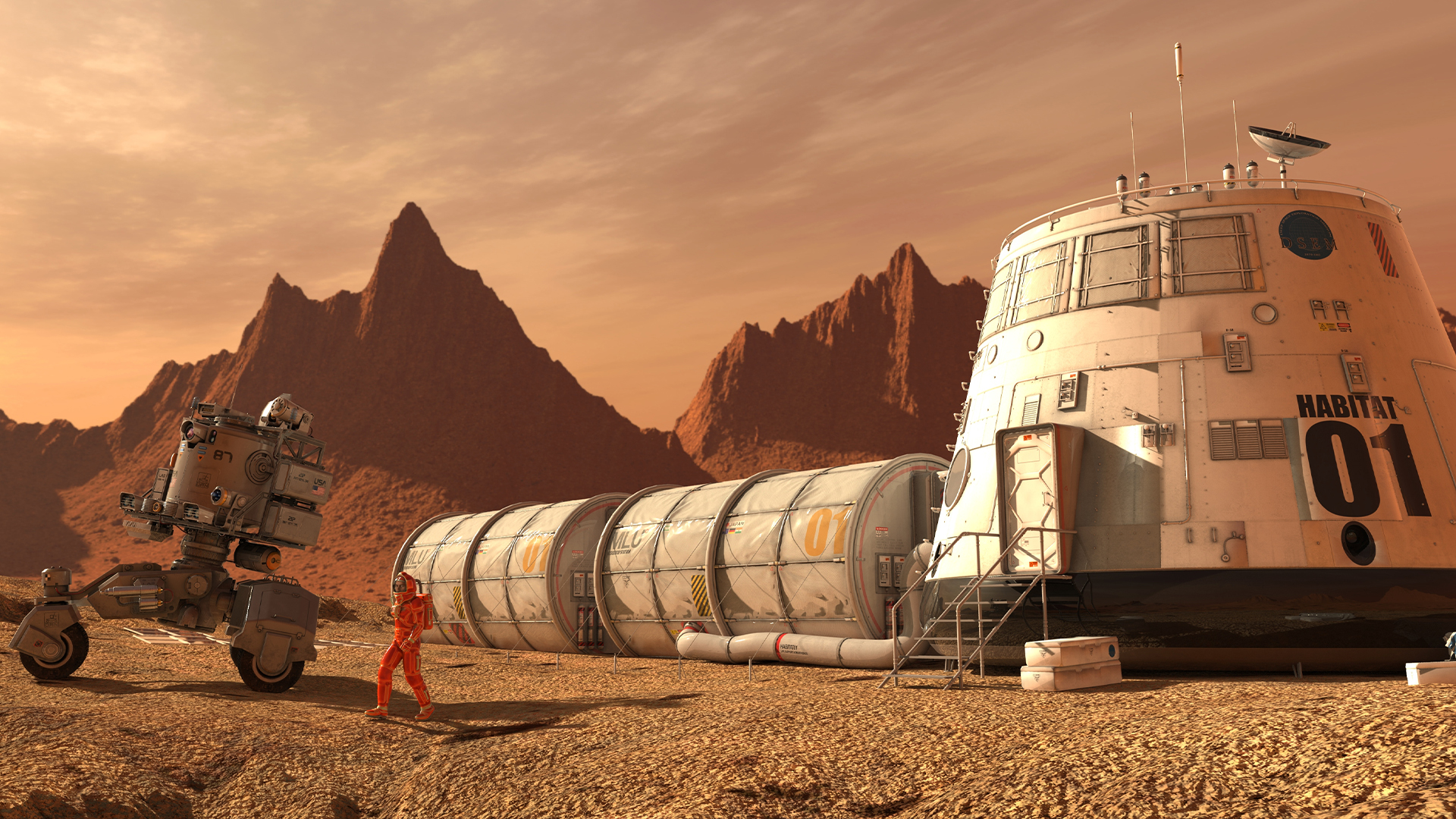Which animals will be the first to live on the moon and Mars?
Spaceborne animals could help humans survive on the moon or Mars. But which creatures would be the best for astronauts?

NASA has plans for a permanent lunar outpost by the end of the decade, with human Mars exploration to follow. But as we set up base camps beyond Earth, human settlers in space will need to bring along an ecosystem that includes animals.
After all, animals could help perform vital tasks: like insects that pollinate, shrimp and fish that can be raised in small spaces and used as food sources, or tiny waterbears that can teach us how to withstand radiation. So which animals should colonize the moon, Mars, and beyond with the astronauts?
There's little consensus yet. "Elaborate ecosystems [beyond Earth] are still far in the future and more in the realm of science fiction rather than active scientific research," David Catling, an astrobiologist at the University of Washington in Seattle, told Live Science in an email. But even without much research, it's clear that the central force of the universe could be a major hurdle.
"The key question is the reduced gravity," Christopher McKay, a planetary scientist at NASA's Ames Research Center, told Live Science. Mars' gravity is about one-third of Earth's, and the moon's gravity is one-sixth of Earth's. Habitats can be built to accommodate the temperatures, pressures and atmospheric compositions Earthlings are used to, but there's no way to change the gravity, McKay said.
Related: How long will it take for humans to colonize another planet?
The best scenario is that animals would develop on Mars and the moon just as they do on Earth, but there's no data on that yet, McKay said. The altered gravity could affect muscle and bone development, leaving Mars animals unable to stand or walk properly. In these conditions, small animals, maybe mice, and aquatic life would likely be the best bet, he said.
Catling gave a similar response. Given the challenges of space, "I think simpler animals, such as insects or crustaceans, will likely be more robust," he said.
Get the world’s most fascinating discoveries delivered straight to your inbox.
Space settlements will also demand resource conservation and high efficiency.
Because fish and other aquatic animals are supported by buoyancy, gravitational changes likely wouldn't have much influence on their development, McKay speculated. Fish might also make good space livestock because they're more efficient at feeding and produce less waste than their terrestrial counterparts, according to a 2021 review in the journal Frontiers in Astronomy and Space Sciences. Since 2019, the Lunar Hatch program has been investigating the feasibility of shipping fish eggs to space for programmed hatching. If they can survive the launch and spaceflight, fish stand to be a more efficient, high-protein, low-waste food source than land livestock, according to the 2021 review.
Insects are also viable space livestock, according to a 2020 report from the University of South Australia and the International Space University in France. The report argues that insects such as crickets (Acheta domesticus) are the most feasible and affordable, offering a good source of protein while using less space and water than traditional protein sources. In a closed-loop life-support system — the artificial habitat where people and animals would live on Mars — insects could provide important services, such as pollination, soil turnover and detritus cleanup, and could be a backup food supply in case crops fail, Catling said.
Like insects, crustaceans can also be raised in tight spaces as an efficient food source. Shrimp can be reared in small tanks and used as part of an aquaponics system that also grows plants, Cattling said.
For lunar colonization, researchers are eyeing tardigrades, often called "water bears." These tiny, hardy creatures have already demonstrated an ability to endure extreme conditions, including extreme heat, extreme cold, radiation and the vacuum of space. Past missions have shown that these tiny critters are still viable after spending 12 days exposed to the vacuum of space, and they can reproduce without negative effects during spaceflight. There are even some dehydrated (and possibly dead) tardigrades on the moon right now after a 2019 crash landing. While they don't serve the human ecosystem directly, studying tardigrades in space could reveal how they withstand extreme conditions like radiation and how we could emulate that trait in other organisms.
"Human exploration, even without colonization, is many years in the future," Catling said. And even then, colonization would come with a host of engineering challenges. But if and when that day comes, the animals that join these new habitats will be the ones that support an ecosystem for those first human settlers, he said.

Donavyn Coffey is a Kentucky-based health and environment journalist reporting on healthcare, food systems and anything you can CRISPR. Her work has appeared in Scientific American, Wired UK, Popular Science and Youth Today, among others. Donavyn was a Fulbright Fellow to Denmark where she studied molecular nutrition and food policy. She holds a bachelor's degree in biotechnology from the University of Kentucky and master's degrees in food technology from Aarhus University and journalism from New York University.



